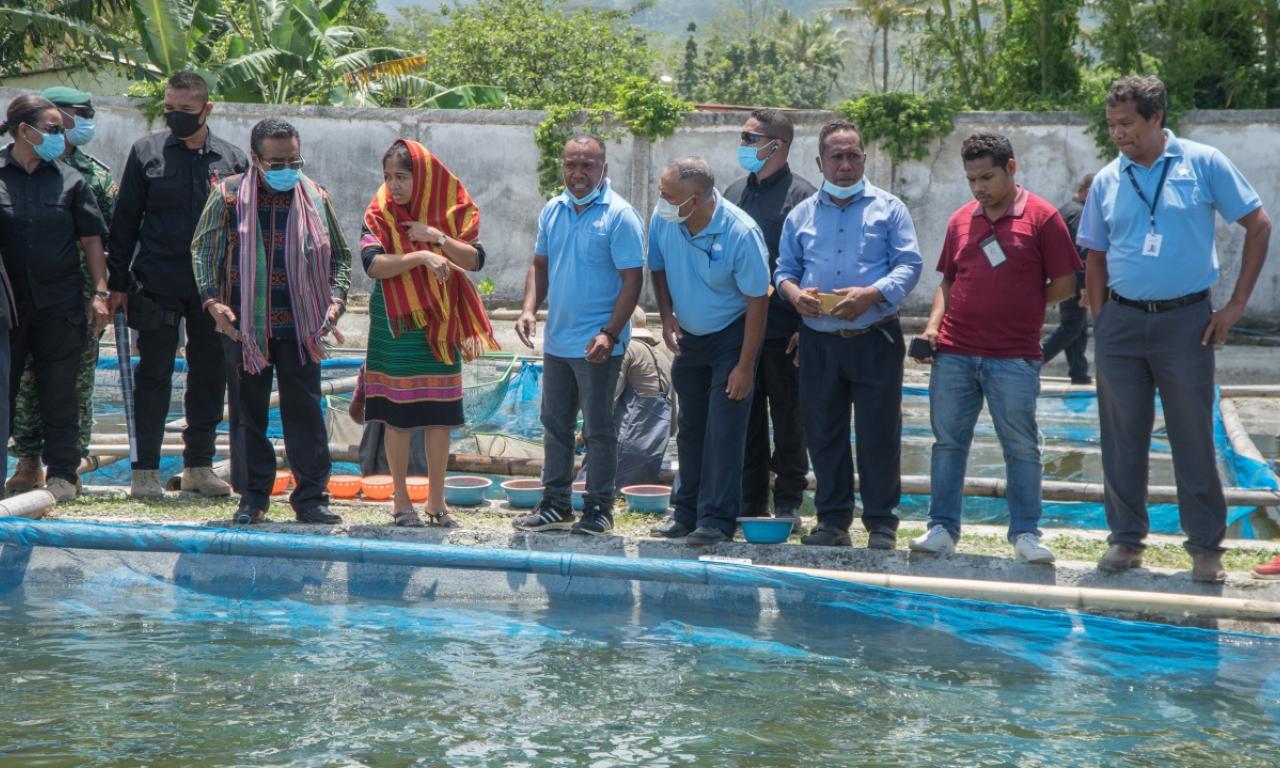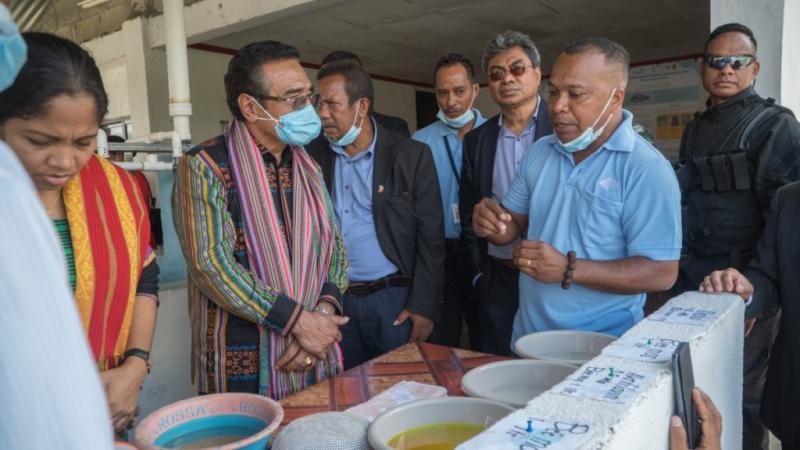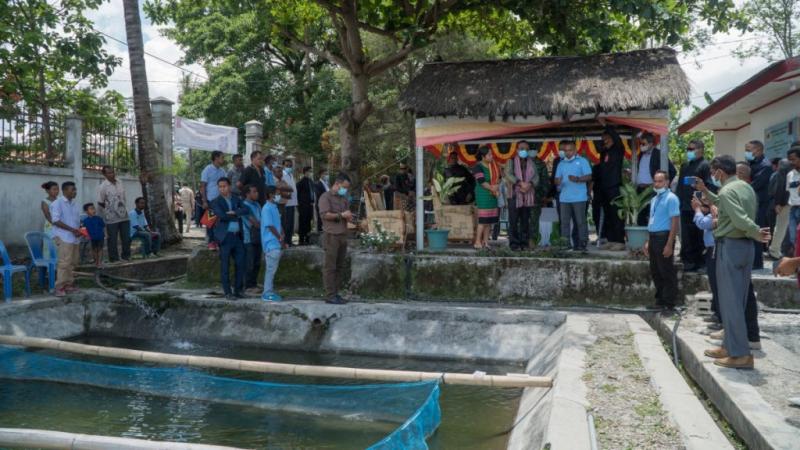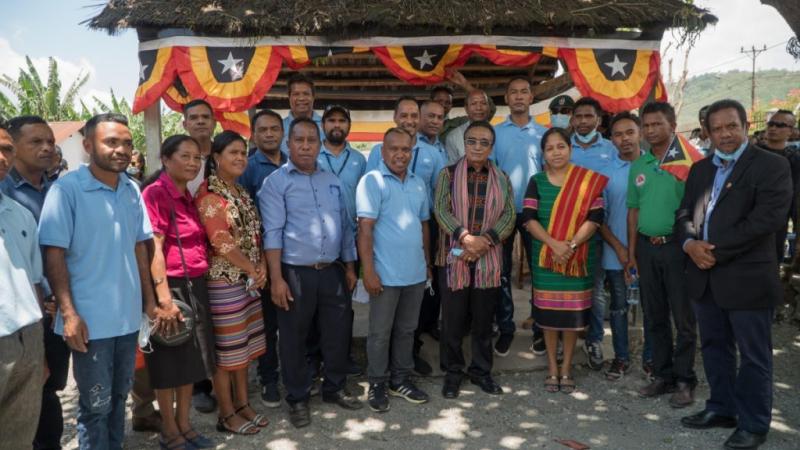
The President of Timor-Leste, Francisco Guterres Lú Olo, visited the Gleno hatchery last week, learning firsthand how high-quality Genetically Improved Farmed Tilapia (GIFT) fingerlings are being produced and distributed nationwide.
During the visit on 18 November 2020, the president spoke with staff about the hatchery’s objectives and operations and took a tour of the fish breeding, incubation, and nursing facilities.
“The government-run hatchery has two objectives—to maintain genetic quality of GIFT broodfish through the rotational breeding of cohorts, and to produce and disseminate high quality-GIFT monosex fingerlings,” said Markus de Jesus Martins, Gleno hatchery manager.

The hatchery was established through the Partnership for Aquaculture Development in Timor-Leste (PADTL) project (2014–2019) funded by the New Zealand Aid Program. The project, which supports the sustainable development of aquaculture, is led by WorldFish in partnership with the Ministry of Agriculture and Fisheries, Timor-Leste.
Martins explained that GIFT was first supplied to Timor-Leste in April 2015 when broodstock was sent from WorldFish Headquarters, Penang, Malaysia, to the Gleno Hatchery in Ermera. At the same time, the project led the construction and refurbishment of the new hatchery at Gleno, with work completed in December 2015 and operations starting in January 2016.
“Farmers benefit from using monosex GIFT fingerlings as they can be harvested four or five months after stocking the pond if the recommended management practices are followed,” Martins told President Guterres Lú Olo.

The Gleno hatchery has four breeding ponds, measuring 10 x 20 m. Each pond has three hapa nets containing 150 male and 200 female fish. More than 100,000 eggs are collected weekly.
Martins spoke with the president about some of the challenges faced by the hatchery. “There is a lack of facilities for processing fish feed and an additional water borewell and a pump for supplying water to the ponds, especially during prolonged dry weather,” he said.
Expanding GIFT hatcheries
Since 2016, the Gleno hatchery has distributed GIFT fingerlings to communities, civil society organizations and government organizations in ten out of the 13 municipalities.
In addition, the Gleno hatchery supplies high-quality broodfish to private multiplication hatcheries in Balibó, Bobonaro municipality, and Moru, Lautém municipality. These private hatcheries are authorized to sell GIFT fingerlings to the public, unlike the government-run Gleno hatchery.
During his visit, President Francisco Guterres Lú Olo encouraged the expansion of the project to other parts of the country to “meet the needs of the national market and develop the economy.”

The project, now in its second phase (2020–2023), has worked with the private sector to set up two public-private-partnership (PPP) hatcheries across Timor-Leste, which will continue with expanded capacity. Another 2-3 new PPP hatcheries will be established by 2023.
Martins explained that any person or entity wishing to establish a GIFT multiplication hatchery or raise monosex GIFT must submit a proposal to the Gleno hatchery. The proposal will be analyzed based on a series of requirements, namely the location where the hatchery will be established or fish will be raised, and how technical assistance will be provided.
The country will need up to 10 hatcheries by 2030 to realize the Timor-Leste National Aquaculture Development Strategy (NADS) (2012-2030), which aims to increase aquaculture production to 12,000 metric tons per year by 2030 and reduce undernourishment by increasing per capita consumption of fish from 6 to 15 kg.
Read President of Timor-Leste, Francisco Guterres Lú Olo, visited the Gleno Hatchery on his Facebook page.